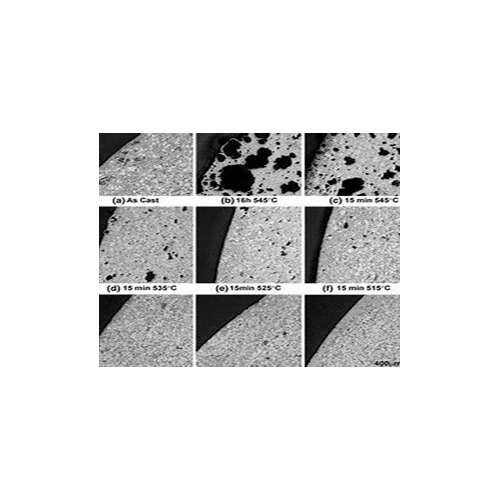Aluminum & Alloys Heat Treatment Services
About Aluminum & Alloys Heat Treatment Services
Aluminum heat treatment is a process by which the strength and hardness of a specific subset of aluminum alloys, namely the wrought and cast alloys that are precipitation hardenable, are increased. Precipitation hardenable aluminum alloys include the 2XXX, 6XXX, 7XXX and 8XXX series. In addition, annealing may be required for parts that have experienced strain hardening during their forming process. It is important to keep in mind that the heat treating of aluminum is quite different from steel.
Aluminum alloys are subject to work hardening, also known as strain hardening. Strain hardening occurs when the aluminum alloy is being shaped by plastic deformation. The plastic deformation causes the grain structures within the aluminum to slide against each other along areas referred to as slip planes. As more and more plastic deformation takes place, there are fewer and fewer slip planes left that are easy to deform. As a result, more force is required to achieve further deformation. When a part has reached this state, it is said to be work hardened. In order to continue plastically deforming the material, the strain hardening has to be removed from the part.
Solution Heat Treatment
While the cooling rate is not a factor in annealing, it is a factor in another similar aluminum heat treatment process called solution heat treatment. During the solution heat treatment process, the elements that are responsible for age hardening (which makes the metal part difficult to work with over time) are dissolved. Those dissolved elements then become spheroids, and the result is a homogenized structure. However, the part must be quenched, or rapidly cooled, to preserve that final distribution of dissolved elements in the alloy that was achieved as a result of heat treatment. The part is then much easier to work with. Over time, though, those trapped elements will precipitate out again and cause age hardening.
Precipitation Hardening
For some aluminum alloys to be able to reach maximum hardness, they need to have the dissolved elements fully precipitated out. Not all aluminum alloys can reach sufficient hardness during natural aging at room temperature. Some can only harden to a certain point, but that can be resolved through precipitation hardening, which is sometimes called artificial aging.
It will then soak for a period of between six to twenty-four hours, followed by cooling to room temperature. The result includes a significant increase in the yield strength of the aluminum, slightly less of an increase in tensile strength, and a decrease in ductility.

- Minimum Order Quantity
- 1 Unit

Price:
- 50
- 100
- 200
- 250
- 500
- 1000+



